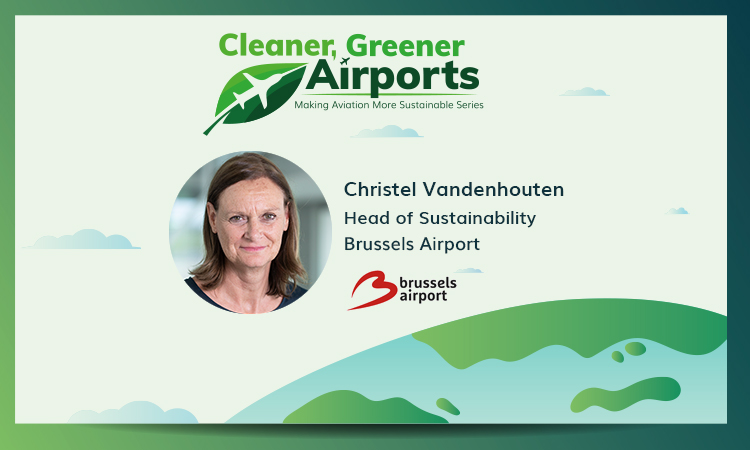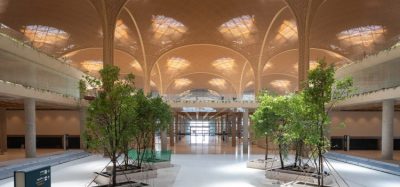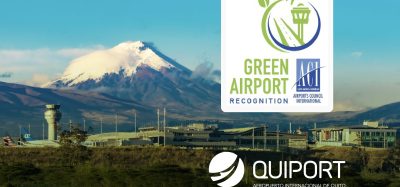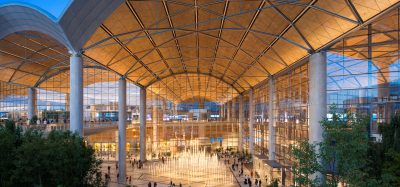Cleaner, Greener Airports: Making Aviation More Sustainable – Brussels Airport
Posted: 30 July 2021 | Christel Vandenhouten | No comments yet
Christel Vandenhouten, Head of Sustainability at Brussels Airport, reflects on the opportunity the coronavirus pandemic has created to drive the airport’s sustainability strategy even further, in the next instalment of International Airport Review’s exclusive series.


Sustainability at the heart for over 10 years
At Brussels Airport (BRU), sustainability has been an integral part of our strategy for over 10 years. As an airport, we are a responsible player in Belgian society, which is why we are constantly looking for a balance between the impact of our activities and the concern for the surroundings – people and environment – in which we operate.
In the past 10 years we have taken many measures to limit our impact on our environment. We have reduced our own CO2 emissions by 32 per cent over the past decade, and we are not stopping there, along with several other airports in Europe, we have been carbon neutral since 2018. We achieved this by reducing our carbon emissions year after year and through our carbon offsetting projects in Asia and Africa, and we aim for net zero carbon at the latest by 2050.
With our two solar parks and a cogeneration plant, we have greened our energy consumption and in every new building project renewable energy is integrated. We make use of energy efficient cooling installations and geothermal water pumps for the heating and cooling of our airport buildings. In recent years, the replacement of regular lights with LED lights resulted in energy savings of 55 per cent for lighting. We continue to replace lighting systems with LEDs when possible.
We electrified our buses to transport passengers on the tarmac and were the first airport that installed its own water treatment plant to purify sanitary wastewater and de-icing water. We have been working in a circular way where possible and intend to do so even more in the future; when renovating our runway, asphalt millings were re-used and we have a combined heat and power installation which generates both electrical power and heat from a single fuel.
We also want to preserve biodiversity at and around the airport as best as possible. We take care of more than 100 acres of grassland on the public accessible side of the airport and more than 400 of acres airside. We have beehives and our own qualified beekeepers, we have worked on the relocation of birds with our neighbouring communes and nature organisations, and we work with a herd of sheep to keep grassy areas of noise barrier short in summer.
As airport operator, we have also taken steering measures to tackle noise and air pollution. For many years now, noisier aircraft at Brussels Airport have been paying significantly higher charges than quieter aircraft, and these are only a few examples of our actions so far.
Aiming higher after an all-time low
But despite what we have achieved already, we are also driven to do more and to accelerate the sustainable transition. There is a momentum now, that has to be used for a sustainable acceleration. The COVID crisis has confronted our sector with unforeseen and unprecedented challenges. In the past year, in certain months, passenger traffic was almost at a standstill and the airport terminal has never been so empty. This, in contrast with our cargo department that was more solicited than ever before, for the transport of e-commerce, perishables and of course pharmaceuticals, including the long-awaited COVID vaccines.
Yet, in every crisis lies great opportunity. For us at Brussels Airport, the COVID crisis we are still facing created a window of opportunity to rethink and accelerate our strategic ambitions, and to rebuild our sector not only better, but also more sustainably than before, in a way that shapes a greener, more resilient future. That means finding a harmonious balance between the ‘3 P’s’: people, planet and prosperity.
Moving forward, we have set five strategic sustainability priorities:
1) Further decarbonise our activities
2) Apply the principle of circular economy (materials, waste, energy)
3) Stimulate inclusion and diversity
4) Improve the local environmental quality (noise and air quality)
5) Improve the modal split.
The common thread throughout these priorities is the use of innovative techniques. Only in this way can we make a difference and bring about change. Through innovation, more sustainable aviation is possible. Equally important to this is collaboration; we cannot do it alone, to realise further sustainability change, we must do it with our partners.
But despite what we have achieved already, we are also driven to do more and to accelerate the sustainable transition. There is a momentum now, that has to be used for a sustainable acceleration.
For Brussels Airport decarbonisation is an absolute must. We have reduced our own CO2 emissions by 32 per cent over the past decade and we aim to be net zero carbon for our own activities by 2050 at the latest, and we are working hard to reach that goal even sooner. This will be mainly achieved through the exclusive use of renewable energy sources such as solar panels, geothermal energy, heating pumps and biogas.
And we are not only considering the decarbonisation of us as an airport, but also that of the activities of our partners. As such, airports are a small part of the industry’s total carbon emissions, but we need to help our airlines and ground handling companies in decarbonising. We work together with skeyes, the Belgian air traffic controller, and representatives of the airlines Brussels Airlines, TUI and DHL in our Collaborative Environmental Management workgroup, where we test new ways to fly to reduce the environmental impact.
Concretely, in the coming years we will work on building a biofuel blending facility at Brussels Airport. Here, the ambition is to mix biofuel with kerosine and systematically increase the percentage of biofuel. Some of our airline partners will test its use, after which we will assess whether this can be rolled out on a larger scale. Next to that, we are also working looking into electric taxiing, which we will be testing in the years to come, and electrifying ground handling equipment. We are also currently studying the feasibility to test the implementation of hydrogen solutions.
We will also develop a 3D model for airports, that maps out the energy flows and operational processes, making it easier to calculate where improvements and adjustments are possible and required. A digital twin, as it were, and when airport tariffs are revised in 2023, we want to differentiate them even further in terms of noise and nitrogen oxides to encourage airlines to further invest in more modern and quieter aircraft. Applying the ‘polluter pays’ principle, the most polluting aircraft will pay more, whereas new generation aircraft will enjoy a discount. In this way we want to convince airlines to use the most modern aircraft for their flights to, and from, Brussels Airport.
Attracting more modern aircraft will, of course, also positively impact the local air quality and noise pollution. It is important for us as an airport to minimise the impact of our activities on our neighbours. Being close to an airport obviously has practical benefits and creates jobs, but we are aware of the impact it can have on air quality and noise. Next to the differentiated tariffs, we are also looking into mitigating measures for the engine test runs to improve the local environmental quality.
Brussels Airport as mobility hub
We also want to work on improving mobility at, and around, the airport so that we can continue to fulfil our role as an intermodal hub for the region. Our name may be Brussels Airport, but actually we are more of an intermodal hub than an airport. Before the COVID crisis, we welcomed 70,000 passengers a day, 24,000 people working onsite at the airport, and thousands of commuters who make use of the wide range of public transport at the airport.
Which is why Brussels Airport is an important part of the solution for mobility around the Belgian capital of Brussels. We were the first airport with a railway station, and we daily have far more buses coming through than aircraft. We want to further strengthen this role and also further enable soft mobility. Facilitating the use of zero- and low-emission means of transport, such as bicycles, is part of this, as is far-reaching co-operation with other players in the transport sector, such as public transport companies. This has already led to new concrete plans, as in the coming years a new tram connection will be built connecting the airport to the centre of Brussels.
The subsidy we have recently been awarded within the EU Green Deal is an important boost to realise the change we aim for. As project leader, together with 21 partners; airport companies, sector associates, knowledge institutions, government agencies and others, we have submitted an ambitious plan that will help the sector to become (even) more sustainable. Our mission is to develop, test and deploy a set of innovative solutions making the airport ecosystem significantly more sustainable. We want to build a benchmark and be a source of inspiration to other airports in Europe and the world. Having the support and these significant subsidies of the European Commission will allow us to accelerate our sustainability actions.
We are ambitious, and we do so with full conviction, we want to turn this crisis into an opportunity to initiate a sustainable recovery for aviation, together with all our partners. The future of aviation will be sustainable!
Biography


Stay Connected with International Airport Review — Subscribe for Free!
Get exclusive access to the latest airport and aviation industry insights from International Airport Review — tailored to your interests.
✅ Expert-Led Webinars – Gain insights from global aviation leaders
✅ Weekly News & Reports – Airport innovation, thought leadership, and industry trends
✅ Exclusive Industry Insights – Discover cutting-edge technologies shaping the future of air travel
✅ International Airport Summit – Join our flagship event to network with industry leaders and explore the latest advancements
Choose the updates that matter most to you.
Sign up now to stay informed, inspired, and connected — all for free!
Thank you for being part of our aviation community. Let’s keep shaping the future of airports together!
Related topics
Cleaner, Greener Airports: Making Aviation More Sustainable Series, Emissions, Sustainability

















